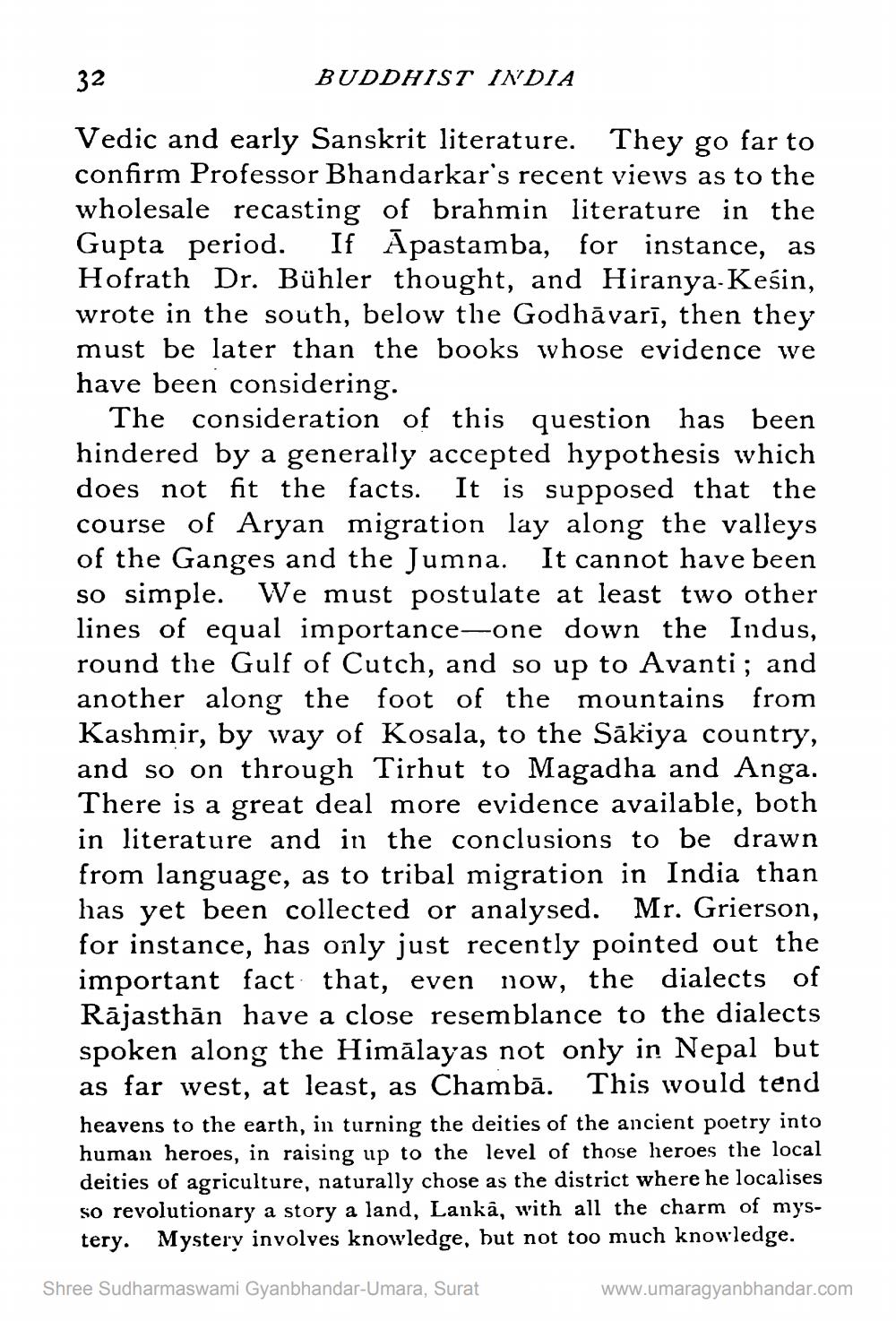________________
32
BUDDHIST INDIA
Vedic and early Sanskrit literature. They go far to confirm Professor Bhandarkar's recent views as to the wholesale recasting of brahmin literature in the Gupta period. If Apastamba, for instance, as Hofrath Dr. Bühler thought, and Hiranya-Kesin, wrote in the south, below the Godhāvarī, then they must be later than the books whose evidence we have been considering
The consideration of this question has been hindered by a generally accepted hypothesis which does not fit the facts. It is supposed that the course of Aryan migration lay along the valleys of the Ganges and the Jumna. It cannot have been so simple. We must postulate at least two other lines of equal importance-one down the Indus, round the Gulf of Cutch, and so up to Avanti; and another along the foot of the mountains from Kashmir, by way of Kosala, to the Sākiya country, and so on through Tirhut to Magadha and Anga. There is a great deal more evidence available, both in literature and in the conclusions to be drawn from language, as to tribal migration in India than has yet been collected or analysed. Mr. Grierson, for instance, has only just recently pointed out the important fact that, even now, the dialects of Rājasthān have a close resemblance to the dialects spoken along the Himālayas not only in Nepal but as far west, at least, as Chambā. This would tend heavens to the earth, in turning the deities of the ancient poetry into human heroes, in raising up to the level of those heroes the local deities of agriculture, naturally chose as the district where he localises so revolutionary a story a land, Lanka, with all the charm of mystery. Mystery involves knowledge, but not too much knowledge.
Shree Sudharmaswami Gyanbhandar-Umara, Surat
www.umaragyanbhandar.com




